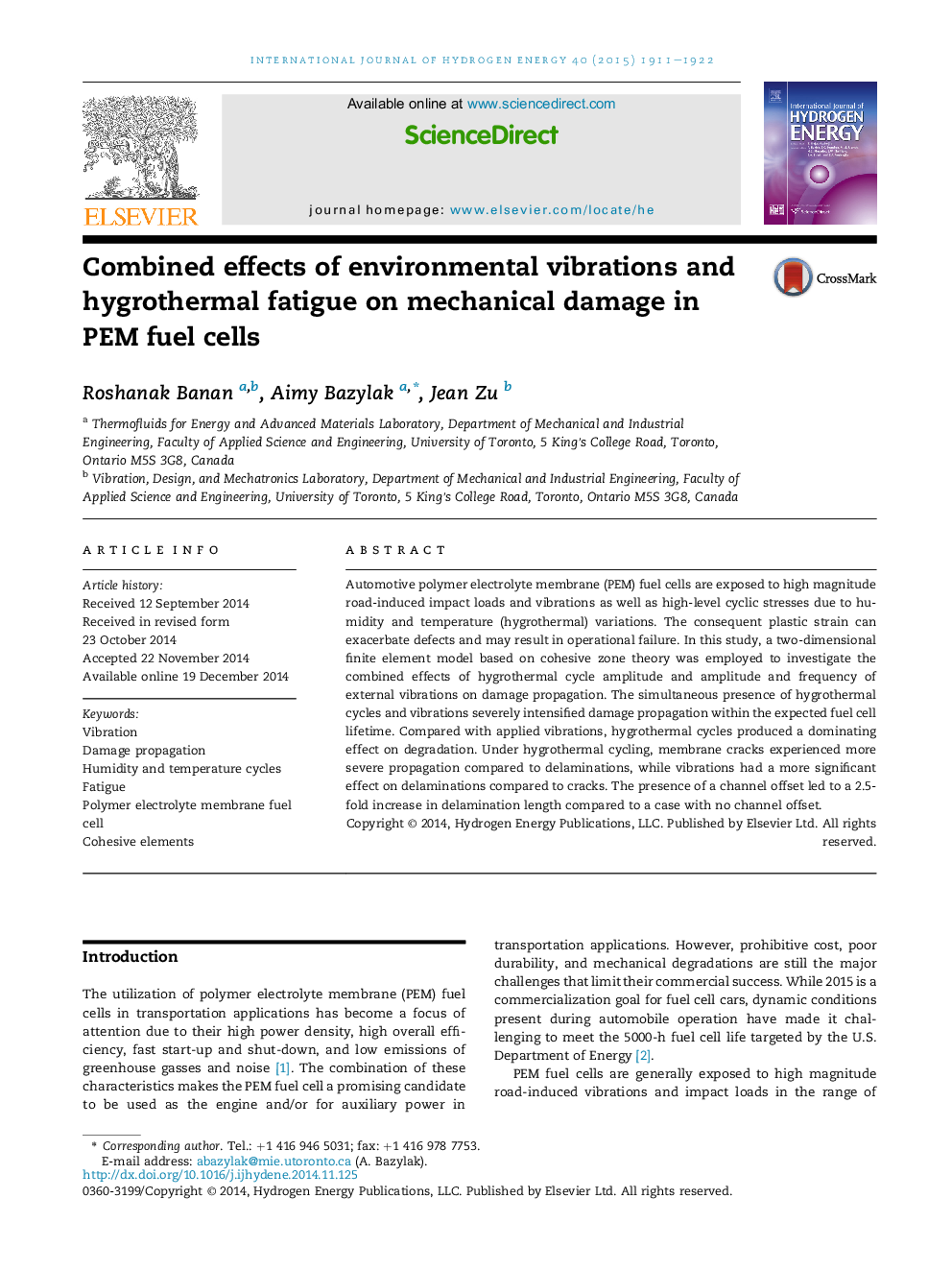| Article ID | Journal | Published Year | Pages | File Type |
|---|---|---|---|---|
| 7716572 | International Journal of Hydrogen Energy | 2015 | 12 Pages |
Abstract
Automotive polymer electrolyte membrane (PEM) fuel cells are exposed to high magnitude road-induced impact loads and vibrations as well as high-level cyclic stresses due to humidity and temperature (hygrothermal) variations. The consequent plastic strain can exacerbate defects and may result in operational failure. In this study, a two-dimensional finite element model based on cohesive zone theory was employed to investigate the combined effects of hygrothermal cycle amplitude and amplitude and frequency of external vibrations on damage propagation. The simultaneous presence of hygrothermal cycles and vibrations severely intensified damage propagation within the expected fuel cell lifetime. Compared with applied vibrations, hygrothermal cycles produced a dominating effect on degradation. Under hygrothermal cycling, membrane cracks experienced more severe propagation compared to delaminations, while vibrations had a more significant effect on delaminations compared to cracks. The presence of a channel offset led to a 2.5-fold increase in delamination length compared to a case with no channel offset.
Related Topics
Physical Sciences and Engineering
Chemistry
Electrochemistry
Authors
Roshanak Banan, Aimy Bazylak, Jean Zu,
